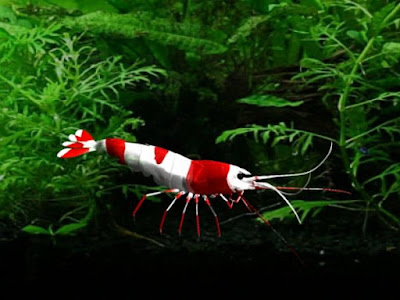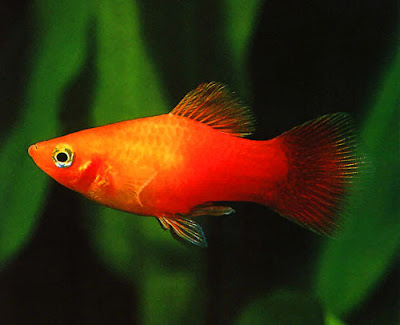Popular Algae Eating Fish for Aquarium: Amazon Sailfin Pleco
Popular
Algae Eating Fish for Aquarium: Amazon Sailfin Pleco – It's but one of numerous species
generally called the common pleco or "Amazon Salfin Pleco"[citation
needed] by aquarists. It will grow to a maximum length of 42.3 centimetres
(16.7 in) SL. Pterygoplichthys pardalis is sometimes mistaken with the
Hypostomus plecostomus (another armored catfish called the "common
plecostomus").
 |
Photo copyright from aquariumdomain.com
|
Popular Algae Eating Fish for Aquarium: Amazon Sailfin Pleco
This fish may become
more agressive, notably to other plecos. This is a very hardy fish yet, and is
a good addition to larger tanks. When of a proper size is able to hold its own
with most other fishes. It's usually considered as just an algae eater, but its
diet should be supplimented with other foods, including green peas, romaine
lettuce, parboiled zucchini, sweet potato, squash, and sinking pellets, while
it eats algae quite effectively.
Driftwood ought to be
comprised in the tank. Plecos will often eat live plants in the tank. As this
indicates, when purchasing a specimen, do not purchase fish with hollow
stomachs the fish has not eaten recently, and will most likely not survive long
following the trip home.
Questions are asked
about keeping them with Goldfish, but the principal worry here is that the
"Pleco" will attempt to suck the slime coatings of the goldfishes
body leading to impending disease problems. Better to place the smaller common
Ancistrus species should you want an algae cleanser.
Identification
Pterygoplichthys could
be recognized by the number of rays in the dorsal fin. More than 10 signals
that it is a Pterygoplichthys. Most other plecos have 8 or fewer beams (in
particular the bigger Hypostomus species that are most inclined to be confused
with Pterygoplichthys).
Is also L023. A
relatively nondescript species that's not likely to be imported as an L number.
This is currently the most often available loricariid as commercial fish farms
breed in enormous amounts them and might be discovered for sale in nearly all
the larger chain-type pet stores.
Feeding
In their natural
habitat, this species feeds on algae, aquatic weeds and other plant matter and
small crustaceans. Will eat mainly vegetable fare in the aquarium but will also
eat pellet and pill foods.
Geometric pattern on the
head and leopard -like, dark spots of variable size's on the abdomen region.
Peaceful on their own
but will be territorial with their own sort.
Sexing
The differences are
shown by comparison of the genital papilla in mature fish in the sexes to the
trained eye. In males this is a small yet thick stump which noticeably
protrudes from the fish's undercarriage. In females it is recessed or lies flat
with the body and is less clear.
Origin
P. pardalis is native to
the Amazon River Basin of Brazil and Peru. Although generally a bottom-living
fish, they have the capability to breathe air from the surface of the water
during dry periods and those in which dissolved oxygen is too low
Reproduction & Spawning
Breeding of members in
the family Loricariidae has been done fairly regularly. The aquarium should
have clay pipes or tubes with a diameter that is reasonably large. The man will
clean the site and will fan water over the eggs and fry. At a temperature of
about 70f the eggs will hatch in about nine days. The fry will eat baby brine
shrimp along with small flake food and algae scrapings. They're not the most
easy to lift and a bare bottom tank is best.
Added info
The Common Pleco is often
bought for its alga eating abilities, though it isn't as powerful in this
respect as some other plecos. Overall, a good community fish if it is given
enough room to grow and thrive in.


Komentar
Posting Komentar